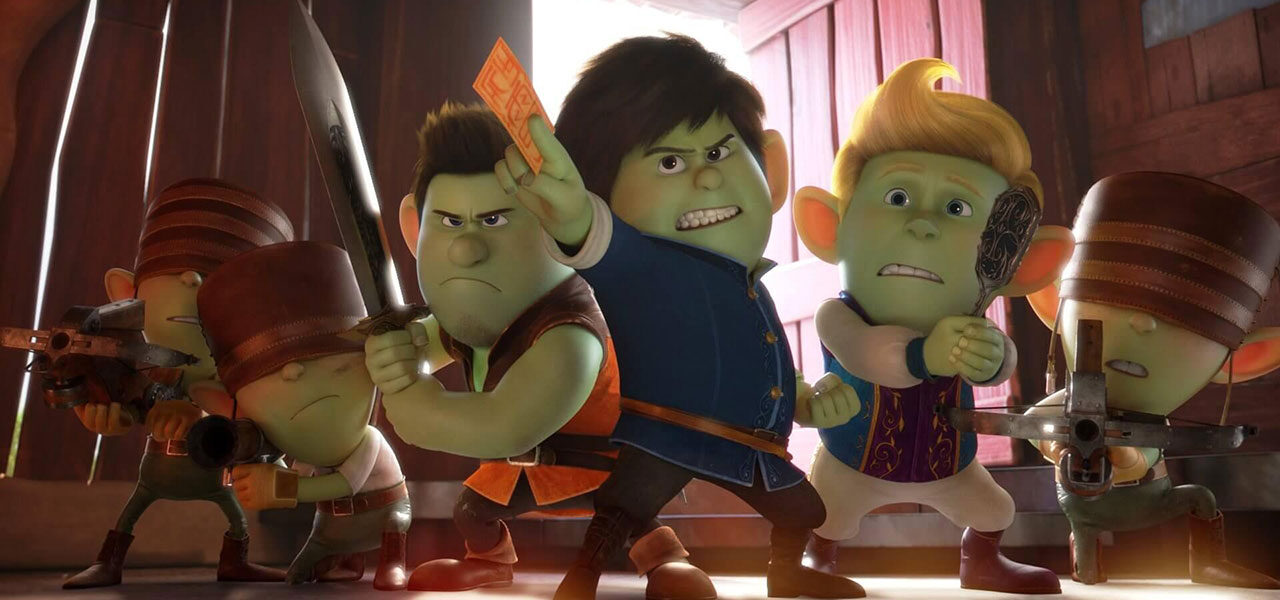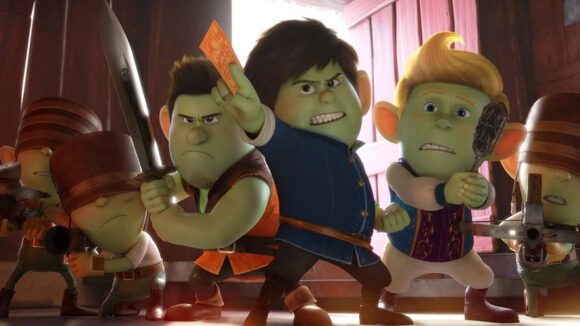

A Look At ‘Red Shoes And The Seven Dwarfs,’ South Korea’s Striking Oscar Hopeful
Ten years in the making, Red Shoes and the Seven Dwarfs is finally having its moment. Following a successful global rollout throughout the year, the film is fulfilling what it set out to do: it is competing with top animation studios in the international marketplace.
The cg family fantasy is the debut feature from Sidus Animation, the animation production arm of Locus Corporation, which is one of Korea’s largest content producers. It is a milestone in Korean animation, both in terms of its production and as an example of an internationally minded IP.
Red Shoes and the Seven Dwarfs riffs on the tale of Snow White, spinning it into a commentary on our society’s obsession with appearances. In the film, Snow White is a full-figured woman who turns into a stereotypically slim princess when wearing the magical red shoes of the title. On her adventures, she meets seven princes — but a curse has left them looking like dwarfs.
The film has performed strongly, topping the Spanish box office for two weeks — ahead of Pixar’s Onward — and securing distribution in over 123 territories. On Apple TV, it reached the number one slot in the kids and family section for North America. Sidus is planning to submit it for consideration for this year’s Oscars.
This success shouldn’t come as a surprise: from the start, Red Shoes and the Seven Dwarfs was conceived with a global audience in mind. The film is in English, drawing together a stellar voice cast led by Chloë Grace Moretz. Director Sungho Hong’s screenplay, which won the Korean Story Competition back in 2010, was gradually refined so that it resonated with cultures across the world.
The film’s ambitions are also reflected in its production values, which broke new ground in the country. Creating a cg feature that could compete with overseas titles posed some difficulties for the Korean crew. Below, alongside behind-the-scenes images from the film and an exclusive character design gallery, Sidus Animation’s Head of Animation Division and producer of Red Shoes and the Seven Dwarfs Sujin Hwang explains how the crew created a hit in these unusual circumstances …

The script was redrafted dozens of times, as the writers sought to tell a story with which audiences everywhere could empathize.
“Even though the subject of ‘true beauty’ is common throughout the world,” says Hwang, “each society has its own culture and mindset and maintaining an attitude of respecting each other’s culture while still paying close attention to detail was paramount.”

Over the course of the rewrites, countless details were re-examined and tweaked, from the era in which the story is set to the matter of whether the “Seven” in the title should be written in letters or as a numeral.
Hwang notes that one thing remained constant: “The ultimate message we tried to convey through the film, namely that the most beautiful person in the world is the one you love. We also wanted to have a heroine who shows that true beauty begins within oneself.”

In terms of the character design process and production pipeline, Sidus broadly followed the model of major animation studios.
“We tried to achieve a look and style which is familiar to global audiences,” explains Hwang. “Fortunately, this is the style that most Korean artists are comfortable with as well and so there was no need to undertake special measures when hiring animators.” Hype around the project meant that Sidus drew over 130 applicants in its first recruitment announcement.
Crucial to the film’s success was Jin Kim, the film’s character designer and animation director. Kim, who is Korean, spent years working at Disney on films including Tangled, Frozen, and Moana. Drawing on his experience in the U.S., he taught his Korean colleagues how to animate to English dialogue.
“He was able to bring us one step closer to the quality expected of global productions when creating characters and having their design express those qualities,” says Hwang.

The crew benefited from Locus Corporation’s experience in cg and vfx production. “This know-how and strength have always been a great asset for us,” says Hwang, “and this helped us in the production of Red Shoes and the Seven Dwarfs. For instance, the scene in which Hans [one of the ‘dwarfs’] is making doughnuts employs a lot of cg production technology to create a realistic, life-like image.”
The film’s visual ambition meant that “every step of the production felt like an uphill battle,” admits Hwang. “But we all had a shared goal and a shared dream and so we were able to resolve any problem as it arose. Being forced to confront these limitations helped us to grow not only as artists, but I believe the film was made all the better for it.”
Exclusive Character Design Gallery









.png)